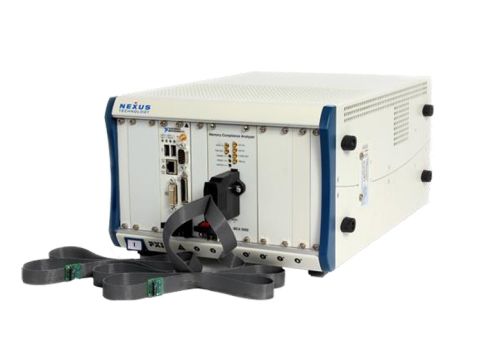
DDR协议分析仪
-
品牌:NEXUS
-
系列:MA4100 Series Memory Analyzer
- Supports JEDEC Engineering Procedures JEP175 DDR4 Protocol Checks
- Updated real-time margin testing to the latest JEDEC specification JESD79-4
- Load-Reduced DIMM support (LRDIMM) enables up to 16 ranks per DIMM
- Second slot support enables monitoring of a dual channel with one instrument – simultaneously
- More additions to the popular real-time performance measurements
- Create your own margin tests and find elusive problems
Key Performance Specifications
- DDR4-3200
- DDR3-3200
- Interposers to connect to any DDR4 target
- Interposers to connect to any DDR3 target
- 1G-sample acquisition depth
- Thousands of real-time memory performance metrics
- Real-time memory compliance margins and validation
- All systems run concurrently (acquisition, performance, and compliance)
- Continuous monitoring for up to 3.25 days
- Updated to JEDEC JESD79-4B (June 2017) Specification
- Programmable probe termination
- 11ps x 10mV x 40-channel analog characterization (iCiS™)
- Continuous acquisition across clock stops and clock frequency changes
- Trigger in and trigger out
Key Features
- Integrated Windows 10 Controller
- Application software ready for bench, remote-to-lab or offline operation
- Application includes advanced listing, waveform, tables and charting
- Turnkey setup, including automated MRW capture and analysis
- Analyze thousands of real-time memory parameters
- Full featured, industry standard trigger system
- Automated analysis runs for everything from detailed setup information, to quick summary runs, to in-depth extended data logging or margin testing runs
- Analog eye characterization on 20-channels simultaneously at 11ps x 10mV
- Correlate with an oscilloscope for memory DQ data capture
- Patented interposer/probe designs
- Support for DIMM, SODIMM, miniDIMM, and/or x4/x8/x16 component interposers
Applications
- DDR4 and/or DDR3
- U-DIMM, R-DIMM, LRDIMM or component (x4/x8/x16/x32)
- SODIMM or miniDIMM
- Memory validation and debug
- Monitoring bus traffic
- Bus traffic measurement
- Optimization of memory performance
- Analog insight
- DDR4 rates to DDR4-3200
- DDR3 rates to DDR3-2667 (1.6GHz state clock capable)
Results Overview
Real-time Continuous Analysis
Real-time analysis provides data results during and after analysis runs which may be extremely long (days) or very short (nanoseconds). During the run, analysis is continuous and in real-time. Any event that occurs during the run is captured and analyzed.
Performance
Memory performance metrics include realtime margin metrics and margin violations. For each margin test, results indicate test coverage, observed margin values, as well as flags indicating margin violations. All data is continuously acquired in real-time with results updates continuously while the analyzer is still running.

Memory performance metrics also include continuous real-time charting of bus performance characteristics such as throughput, utilization, power management, and more.

Simultaneous State Capture
State capture results include continuous traffic around one or more events of interest. The traffic – consisting of time, bus commands, bus addressing, margin violations, and trigger events – is presented in listing or waveform displays. State capture depths from one hundred samples to one billion samples is available. Advanced acquisition controls monitor and respond to the continuous traffic in real-time to best utilize the state capture memory. Advanced post-capture search and filter can quickly parse the acquisition store.
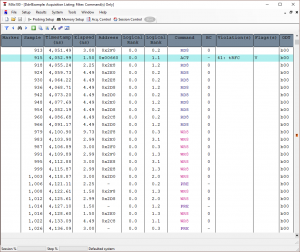
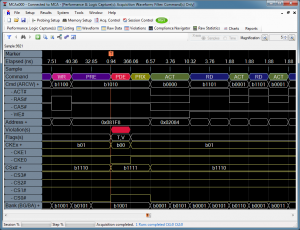
Automated Analysis
Analysis is automated and continuous from the time the user clicks the Start button until the analysis session completes. While running, the session updates the application with real-time results. In the following image you can see real-time margins for all compliance parameters as well as a chart of read/write bus throughput. In this example, the analyzer is configured to continuously monitor acquire data until the first occurrence of a compliance violation occurs. That’s three simultaneous measurements, each collecting/monitoring real-time data!
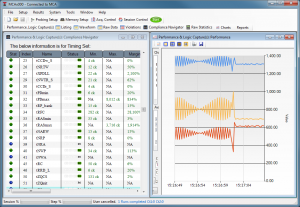
measurements, each collecting/monitoring
real-time data.
Quickly find, analyze and share intermittent problems.
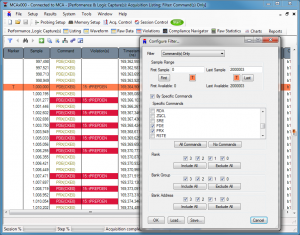
Turnkey Setup
From first starting the software there are five easy steps to start gathering data. First click the New icon (1) and select the system file for the interposer/probe you are using. Next reset your target to ensure MRS data is sent. The analyzer will automatically acquire this information! Now click the Memory Setup button (2) to display the setup window. Then select the correct speed bin, rank count, and density (3). Last, click the Update Memory Configuration button (4) to apply the MRS data to the analyzer’s setup. That’s it. You are ready to start analyzing data!

Higher speed operation (clock rates above 1GHz) may require additional per channel tuning using iCiS™. For all speeds iCiS™ can also analyze whether bit errors can be expected over a configurable amount of time (from milliseconds to hours). iCiS™ is an extra step that is not always required but provides detailed and invaluable insight of signal quality and expected performance for data acquisition you can trust.
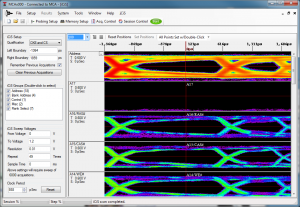
Reliable Connection
Over twenty compatible interposers/probes are available for DDR4 and DDR3 designed to preserve analog signal characteristics and maintain compatibility with Tektronix equipment for DQ data bus analysis.
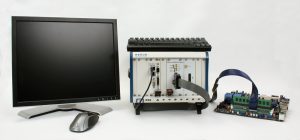
Interposers/probes available for DDR4 and DDR3 DIMMs, SODIMMs, miniDIMMs and components (x4, x8, or x16).
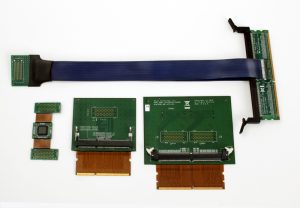
Recommended DDR4 Interposers
A DDR4 DIMM Compliance Interposer is recommended for U-DIMM, R-DIMM or LRDIMM targets. A DDR4 78 Ball Logic/Compliance Interposer is recommended for embedded targets using x4/x8 DDR4 memory. A DDR4 96 Ball Logic/Compliance Interposer is recommended for embedded targets using x16 DDR4 memory.
Attachment Services
DDR4 memory components are available in a variety of packages. We provide attachment services for all of our component/package interposers so that our customers are up and running quickly and reliably.
Part Numbers
DDR4 Configurations
- MA4150 DDR4
- Memory analyzer with DDR4 performance, margins and capture up to DDR4-3200 (1.6GHz) with 1G-Sample acquisition depth. Additional support for DDR3 available as an option.
- Nomenclature: NEX-MA4150-DDR4
- Includes: Chassis w/Windows 10 PC Controller, MA4150 module enabled for DDR4, and Keyboard/Mouse
- MA4100 DDR4
- Entry level memory analyzer with DDR4 performance, margins and capture up to DDR4-2667 (1.34GHz) with 512M-Sample acquisition depth. Options include 1GSample, and DDR4-3200 (1.6GHz) support. Options also available to add DDR3 support.
- Nomenclature: NEX-MA4100-DDR4
- Includes: Chassis w/Windows 10 PC Controller, MA4100 module enabled for DDR4, and Keyboard/Mouse
- MA4120 DDR4
- Logic analyzer capture only up to DDR4-3200 (1.6GHz) with 512M-Sample acquisition depth. Options available for 1GSample, performance, and margins. Options also available to add DDR3 support.
- Nomenclature: NEX-MA4120-DDR4
- Includes: Chassis w/Windows 10 PC Controller, MA4120 module enabled for DDR4, and Keyboard/Mouse
DDR3 Configurations
- MA4100 DDR3
- Memory analyzer with DDR3 performance, margins and capture up to DDR3-2133 with 512M-Sample acquisition depth. Option for 1G-Sample. Options also available to add DDR4 support at DDR4-2667 or DDR4-3200
- Nomenclature: NEX-MA4100-DDR3
- Includes: Chassis w/Windows 10 PC Controller, MA4100 module enabled for DDR3, and Keyboard/Mouse
